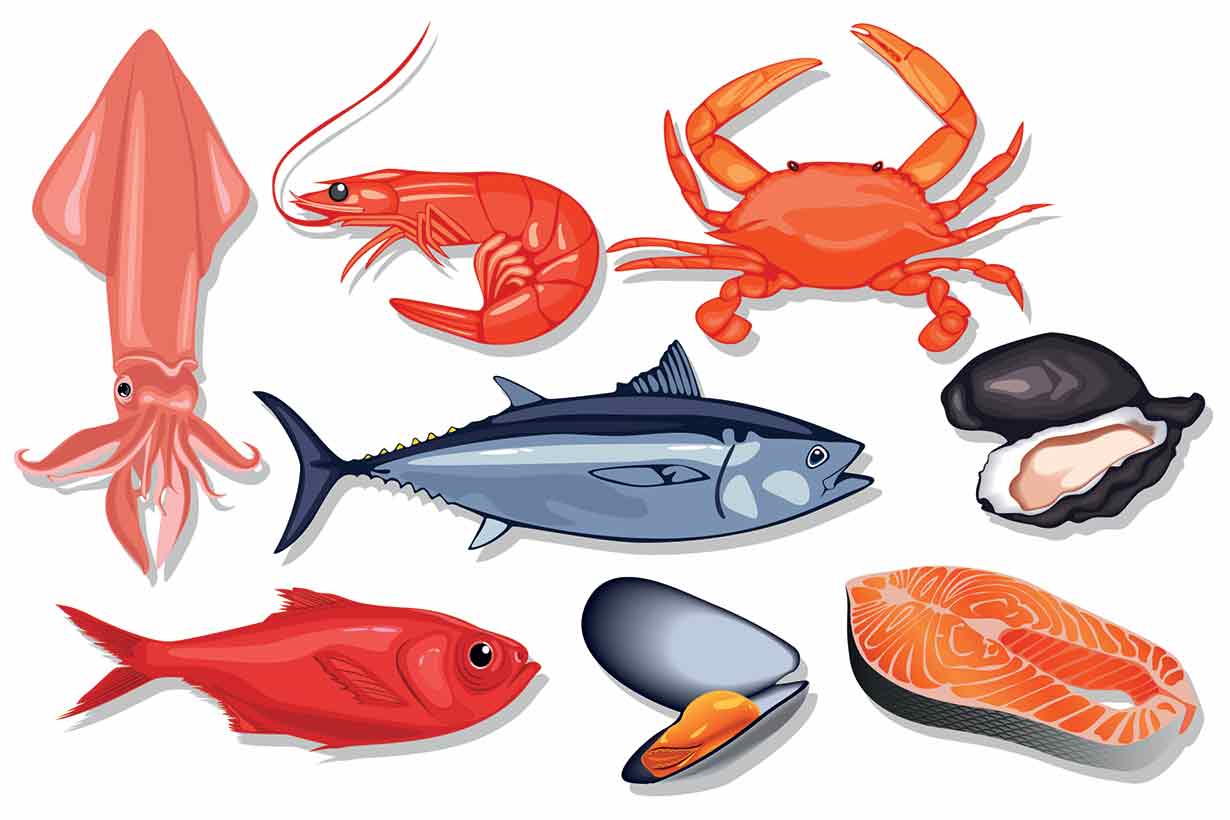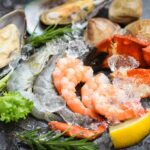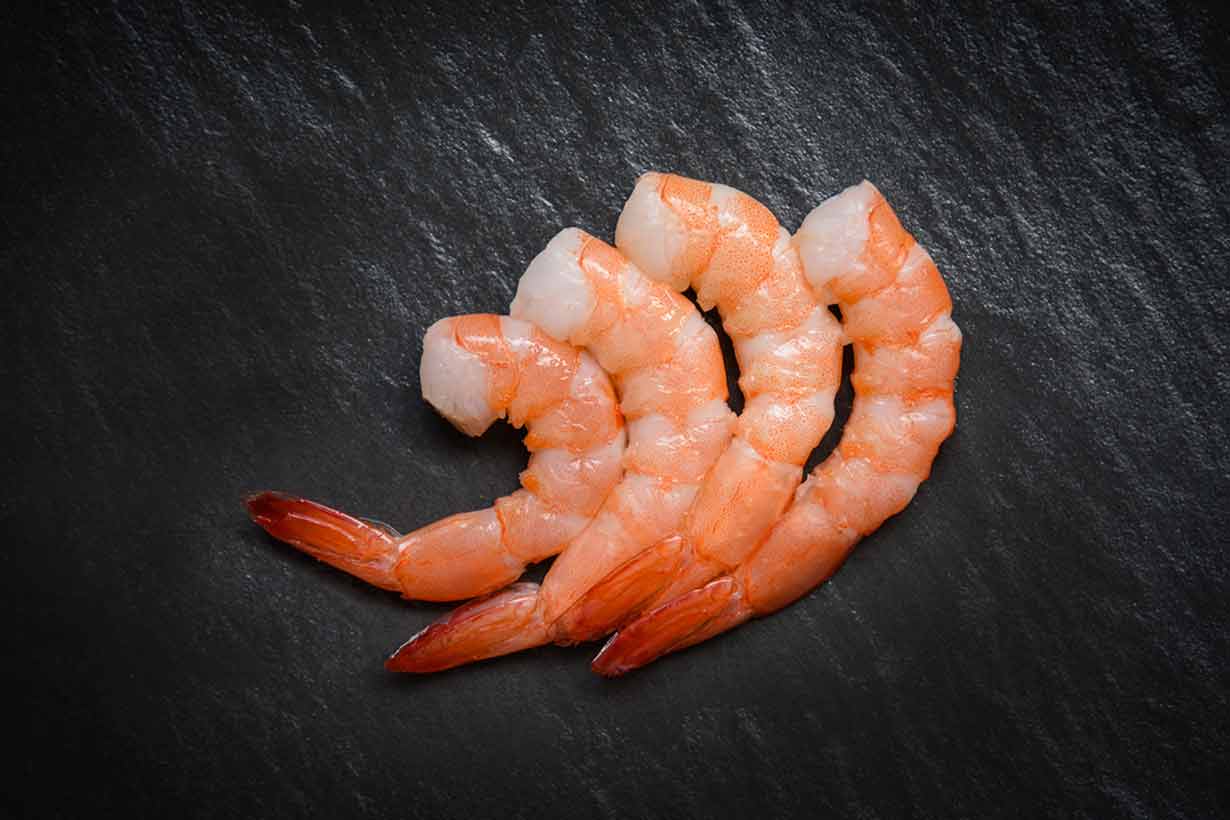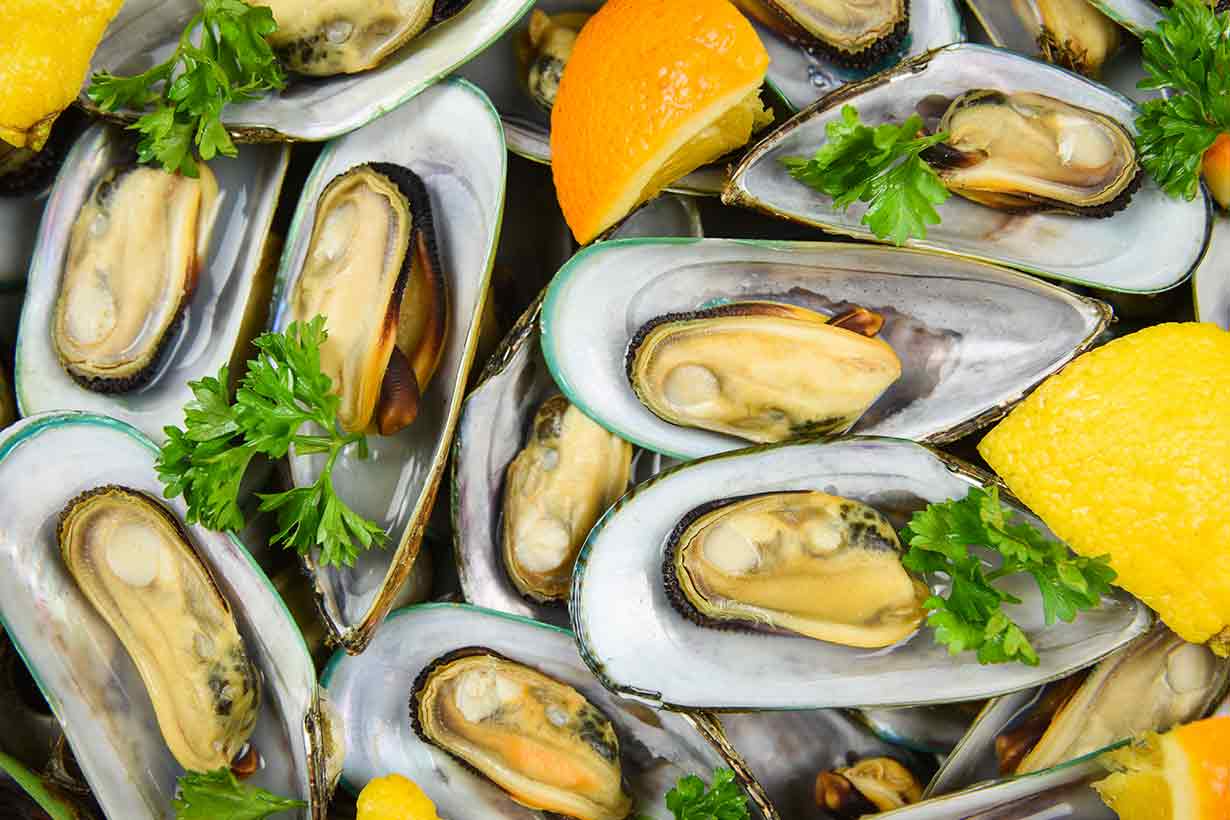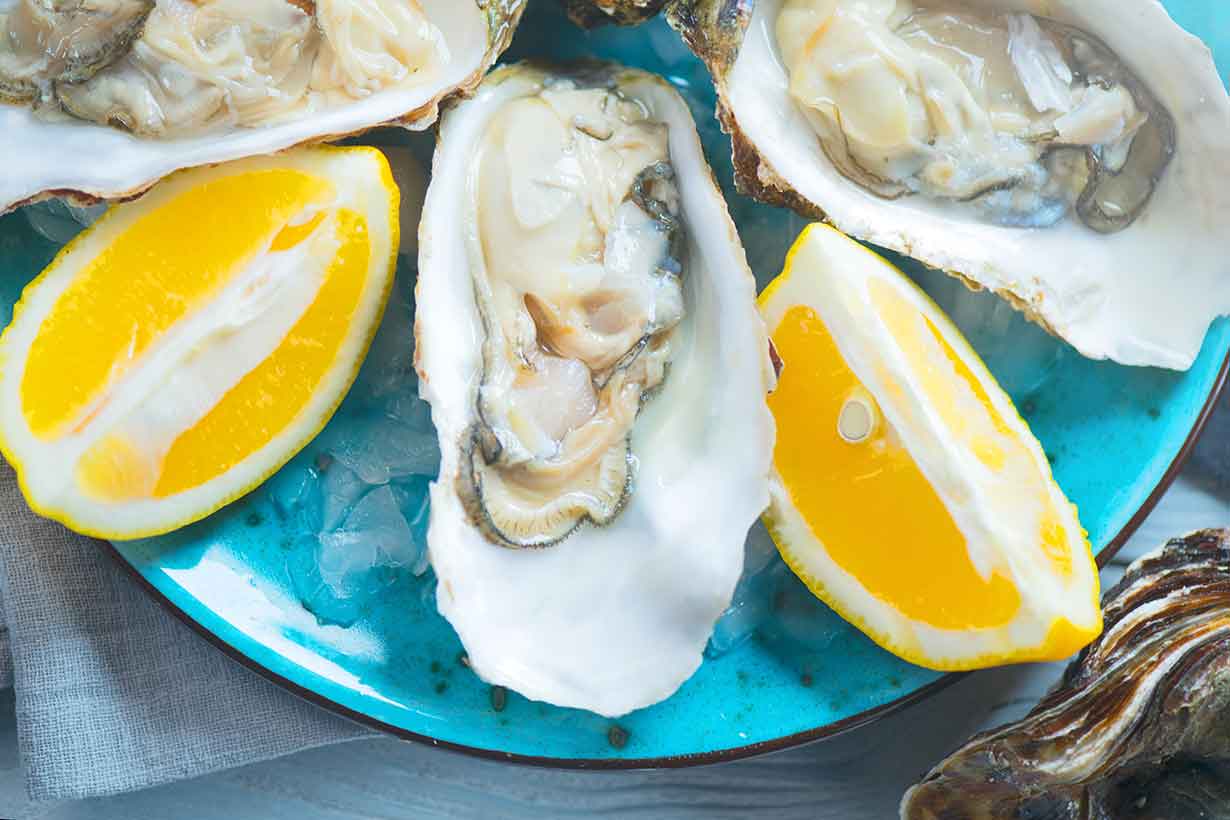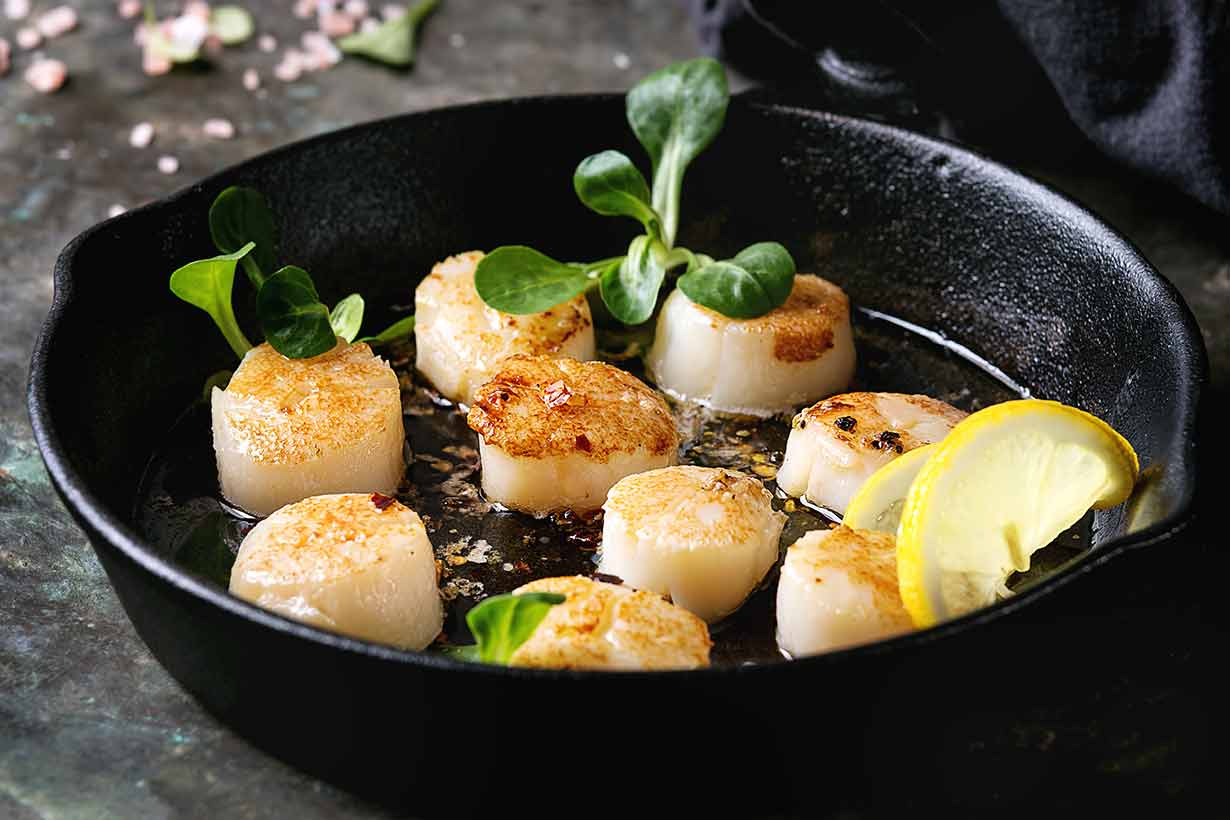Cockles are a common variety of seafood.
However, these little shellfish rarely get talked about compared to more popular seafood options such as oysters and shrimp.
This is a shame because cockles provide a substantial source of nutritional value.
In this article, we take an in-depth look at the nutritional benefits of cockles.
What Are Cockles?
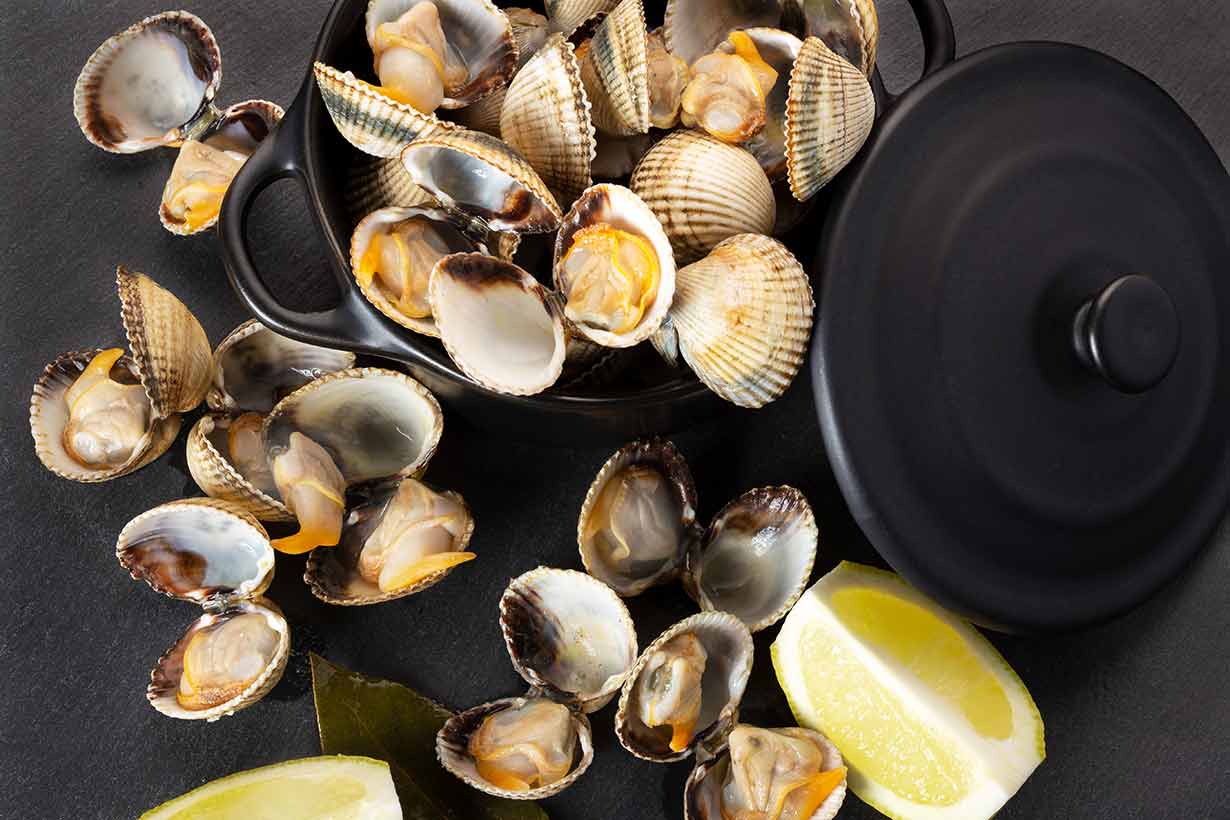
First of all, cockles are a small species of bivalve mollusk.
Mollusks are one of two distinct groups of shellfish, crustaceans being the other. This makes cockles part of the same wider group that includes clams, mussels, and oysters.
Cockles live in coastal areas around the world and do not live in freshwater, and as a type of seafood, they are eaten both fresh and pickled.
Fresh cockles tend to only be available in the surrounding coastal areas where they live, whereas pickled cockles are packed in jars and more widely available.
Cockles are widely produced in countries such as the Netherlands, United Kingdom, New Zealand, Malaysia, and Northern European countries. In these areas, cockles are easy to find and relatively affordable.
In other countries, they may be less widely available, depending on imports.
Cockles have a salty and semi-sweet taste with a soft and chewy texture.
Nutrition Facts
Based on data from the NCCDB nutrition database (accessed through Cronometer) and the FDA’s published daily values, here are the nutrition facts for cockles (raw) per 3.5 oz/100-gram serving (1, 2).
| Name | Amount | % Daily Value |
|---|---|---|
| Calories | 79 kcal | 4% DV |
| Carbohydrate | 4.7 g | 1.7% DV |
| Fiber | 0 g | 0% DV |
| Sugars | 0 g | |
| Fat | 0.70 g | 1.1% DV |
| Saturated | 0.07 g | <1% DV |
| Monounsaturated | 0.06 g | |
| Polyunsaturated | 0.2 g | |
| Omega-3 | 0.16 g | |
| Omega-6 | 0.04 g | |
| Protein | 13.5 g | 27% DV |
| Dietary cholesterol | 36.0 mg | 12% DV |
Vitamins
- Vitamin B12: 52.27 mcg (2188% DV)
- Vitamin B6: 3.25 mg (191% DV)
- Niacin (B3): 3.20 mg (20% DV)
- Riboflavin (B2): 0.20 mg (15% DV)
- Vitamin C: 13.74 mg (15% DV)
- Folate: 56.80 mcg (14% DV)
- Vitamin A RAE: 95 mcg (11% DV)
- Choline: 57.20 mg (10% DV)
- Pantothenic Acid (B5): 0.38 mg (8% DV)
- Vitamin E: 0.57 mg (4% DV)
- Thiamin (B1): 0.01 mg (1% DV)
- Vitamin K: 0.21 mcg (<1% DV)
Minerals
- Iron: 16.20 mg (90% DV)
- Selenium: 25.7 mcg (47% DV)
- Copper: 0.36 mg (40% DV)
- Manganese: 0.53 mg (23% DV)
- Phosphorus: 179.0 mg (14% DV)
- Zinc: 1.45 mg (13% DV)
- Potassium: 332.0 mg (7% DV)
- Sodium: 59.0 mg (3% DV)
- Calcium: 30.0 mg (2% DV)
- Magnesium: 10.0 mg (2% DV)
Cockles Are Extremely Nutrient-Dense
As we can see from the nutritional values section, cockles supply a broad range of essential nutrients.
Among these, they are one of the most significant dietary sources of vitamin B12. Just 100 grams provides 52.27 mcg of B12, equal to 2188% of the recommended daily value for the vitamin (2).
Additionally, 100 grams of cockles provides more than 40% of the daily value for iron, selenium, copper, and vitamin B6.
With all of these nutrients for only 79 calories, cockles are exceptionally nutrient-dense.
Cockles Contain Very Low Amounts of Mercury
One of the biggest downsides of seafood consumption is that many species contain high concentrations of mercury. Mercury is present in all seafood to varying degrees, but larger fish like shark, tuna, and swordfish tend to contain the most (3, 4).
Excessive mercury intake can potentially lead to mercury toxicity, which depletes selenium availability and impairs the function of important enzymes in the human body. These effects can lead to oxidative damage and a range of potential adverse effects (5, 6).
Now for the positive news: cockles do not contain appreciable amounts of mercury.
Studies on the Mercury Content of Cockles
In a Spanish study analyzing the mercury levels of various mollusks, researchers looked at the mercury content across 40 samples of cockles. The mean mercury content was 66.59 mcg per kg (or 6 mg per 100 grams) (7).
If we calculate the above values on a per-gram basis, cockles contained 0.06 mcg per gram weight. According to joint information from the USDA and EPA, the ‘best choices’ are fish with 0.15 mcg mercury or lower per gram for those eating three weekly fish servings (8).
A further study based out of Indonesia tested the mercury concentration of three different cockle species (9).
Based on 45 samples, the mercury levels ranged from 0.032 mg to 0.077 mg per kilogram. This is equal to 32-77 mcg per kilogram and 0.032-0.077 mcg per gram, which is well within recommended levels.
For some comparative data, canned albacore tuna, king mackerel, and swordfish contain 0.35 mcg, 0.73 mcg, and 1.0 mcg per gram, respectively (8).
Cockles Provide Large Amounts of Protein
Cockles are also an excellent source of protein, and this is particularly true when looking at the amount of protein per calorie.
Since cockles only contain 79 calories per 100-gram serving, this makes them very protein-dense on a per calorie basis.
The table below shows how cockles compare to some other protein sources based on raw weight and per 100 calories.
| Food Name | Protein per 100g | Protein per 100 Calories |
|---|---|---|
| Chicken breast (no skin) | 22.5 g (9) | 18.8 g |
| Cockles | 13.5 g | 17.1 g |
| Ground beef (90% lean) | 20.0 g (10) | 11.4 g |
| Salmon (Atlantic) | 20.4 g (11) | 9.8 g |
| Tofu (Firm) | 17.3 g (12) | 12.0 g |
As we can see from the above values, cockles compare favorably to many other protein sources in the protein per calorie metric.
They are reasonably high in protein per 100 grams too.
Potential Downsides
Although cockles have potential drawbacks, they are generally applicable to all shellfish, and they are nothing unique to cockles.
Improperly Cooked Cockles Are a Risk For Foodborne Illness
As with other shellfish species, one of the potential downsides of cockles is that they can potentially cause foodborne illness.
In this regard, cockles can harbor bacteria that can lead to infections such as hepatitis A, salmonella, and vibriosis (13, 14, 15, 16).
The biggest risk factor for these infections is consuming raw or undercooked cockles.
A useful guide published by the Washington State Department of Health provides clear information on how to handle, store, and cook cockles and other shellfish.
Notably, the guide notes that for proper food safety, shellfish must reach an internal temperature of 145°F for a minimum of 15 seconds (17).
The full guide is available here.
Allergy
Shellfish are among the most common food allergens in human diets.
While allergies to crustacean species of shellfish like crab, shrimp, and lobster are more common, some people are allergic to mollusk species too (18).
According to the Institute of Agriculture and Natural Resources’ Food Allergy Research and Resource Program (FARRP), allergy to mollusks like cockles is caused by a type of allergenic protein called tropomyosin (19, 20).
How To Use Cockles
Whether fresh or pickled, what can you do with cockles once you’ve got some?
One of the positives about cockles is that we can use them in a wide variety of different ways.
Here are some of the most common ways to use cockles:
- Eat them as a snack: some people enjoy eating pickled cockles just as they are without any preparation. Jarred cockles in brine are pre-cooked, making them an easy snack for those who enjoy eating them in this way.
- In soups and stews: it is easy to add some cockles into a seafood soup or stew.
- Salads: mix a few cockles into a salad with lettuce, cherry tomatoes, red onion, and other preferred ingredients/dressings.
- Pan-fried cod and cockles: pan-fry some cockles in olive oil or butter with some garlic, cod, and vegetables of choice.
These are just a few examples, but there are numerous other ways to use cockles, from pasta dishes to steamed and even deep-fried dishes.
One popular seafood combination is serving cockles alongside a variety of seaweed such as in this recipe.
Final Thoughts
Cockles are nutrient-rich and versatile shellfish with a pleasant taste.
They are an excellent source of vitamins and minerals, with their vitamin B12 content being particularly notable.
Depending on where you live, cockles can also be very affordable.
While they do have some potential downsides, these little shellfish offer a lot of nutritional value.

